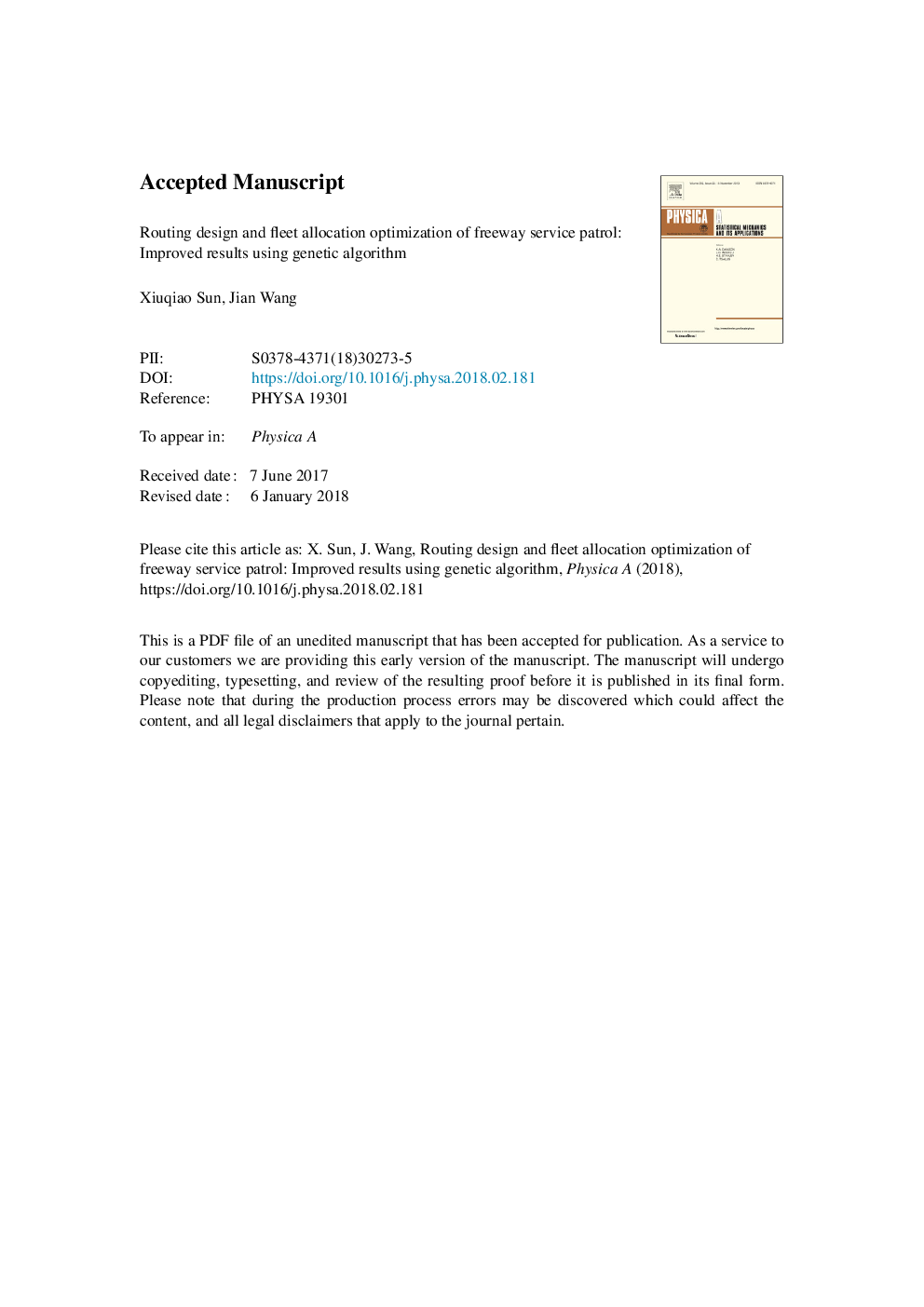ترجمه فارسی عنوان مقاله
طراحی مسیریابی و بهینه سازی تخصیص ناوگان گشت زنی خدمات بزرگراه: نتایج بهبود یافته با استفاده از الگوریتم ژنتیک
عنوان انگلیسی
Routing design and fleet allocation optimization of freeway service patrol: Improved results using genetic algorithm
| کد مقاله | سال انتشار | تعداد صفحات مقاله انگلیسی |
|---|---|---|
| 92857 | 2018 | 21 صفحه PDF |
منبع

Publisher : Elsevier - Science Direct (الزویر - ساینس دایرکت)
Journal : Physica A: Statistical Mechanics and its Applications, Volume 501, 1 July 2018, Pages 205-216
ترجمه کلمات کلیدی
گشت زنی خدمات بزرگراه، مدیریت حوادث، تخصیص ناوگان، طراحی مسیر گشت زنی، الگوریتم ژنتیک،
کلمات کلیدی انگلیسی
Freeway service patrol; Incident management; Fleet allocation; Patrol routing design; Genetic algorithm;

